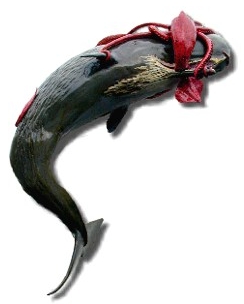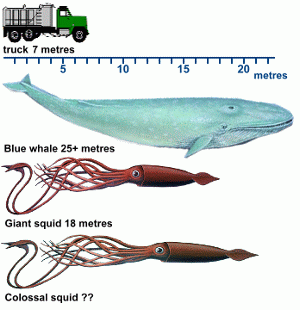 Squid are molluscs, in the same family as slugs, snails and shellfish. Giant squid are the largest of all molluscs (and the largest invertebrates on Earth); they are thought to grow up to 18 metres in length, and can weigh up to a tonne. 
Sperm whales have been found with massive tentacle scars on their skin, more evidence that the giant squid exist in the depths of the ocean. Scientists believe that the giant squid is the only animal capable of defending itself from the attack of a sperm whale, the world's largest carnivore. Giant squids are thought to live in the deepest, coldest parts of the sea. Occasionally, warm water causes a giant squid to rise to the surface, where it is unable to return to the deeps. A giant squid's blood cannot carry oxygen well in warm water, so if it is forced to the surface, it will suffocate. Surprisingly, there is an even larger squid out there in the deep ocean! Recently, a colossal squid has been caught in the waters off the Antarctic continent. It's being called the 'colossal squid'.  The existence of the 'colossal squid' has been suspected for many decades, since arms from the creature have occasionally been recovered from the stomachs of sperm whales. But it wasn't until an actual specimen was caught near Antarctica (pictured above) that the reality of this new type of squid was brought home to scientists. The specimen is larger than any previously seen giant squid, and it is only a young one, just two-thirds grown. This squid has one of the largest beaks of any squid, and seems to have more muscles attached to its tentacles. It also has unique swivelling hooks on the clubs at the ends of its tentacles. All of these things make it a very deadly predator. It seems there are sea monsters after all! |